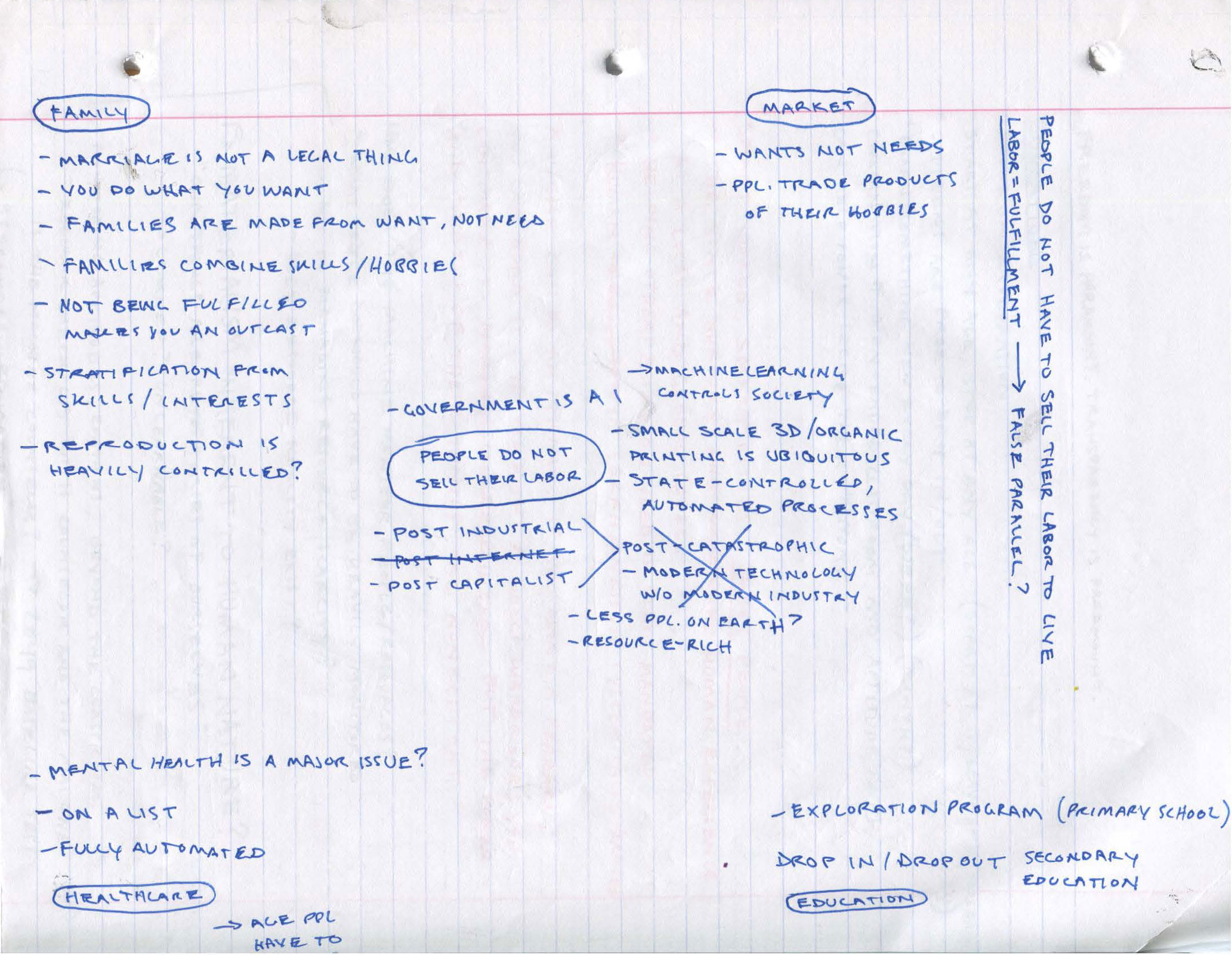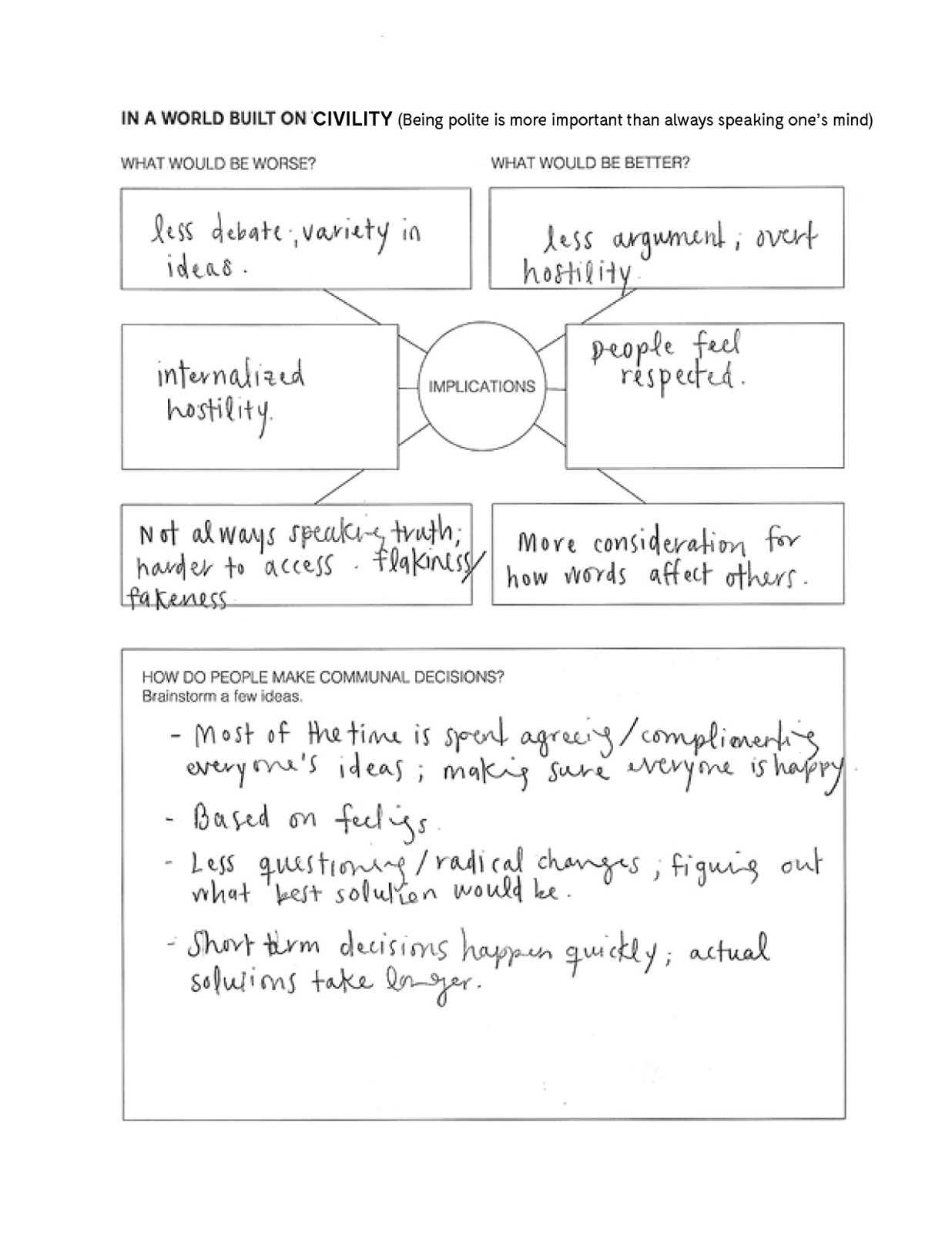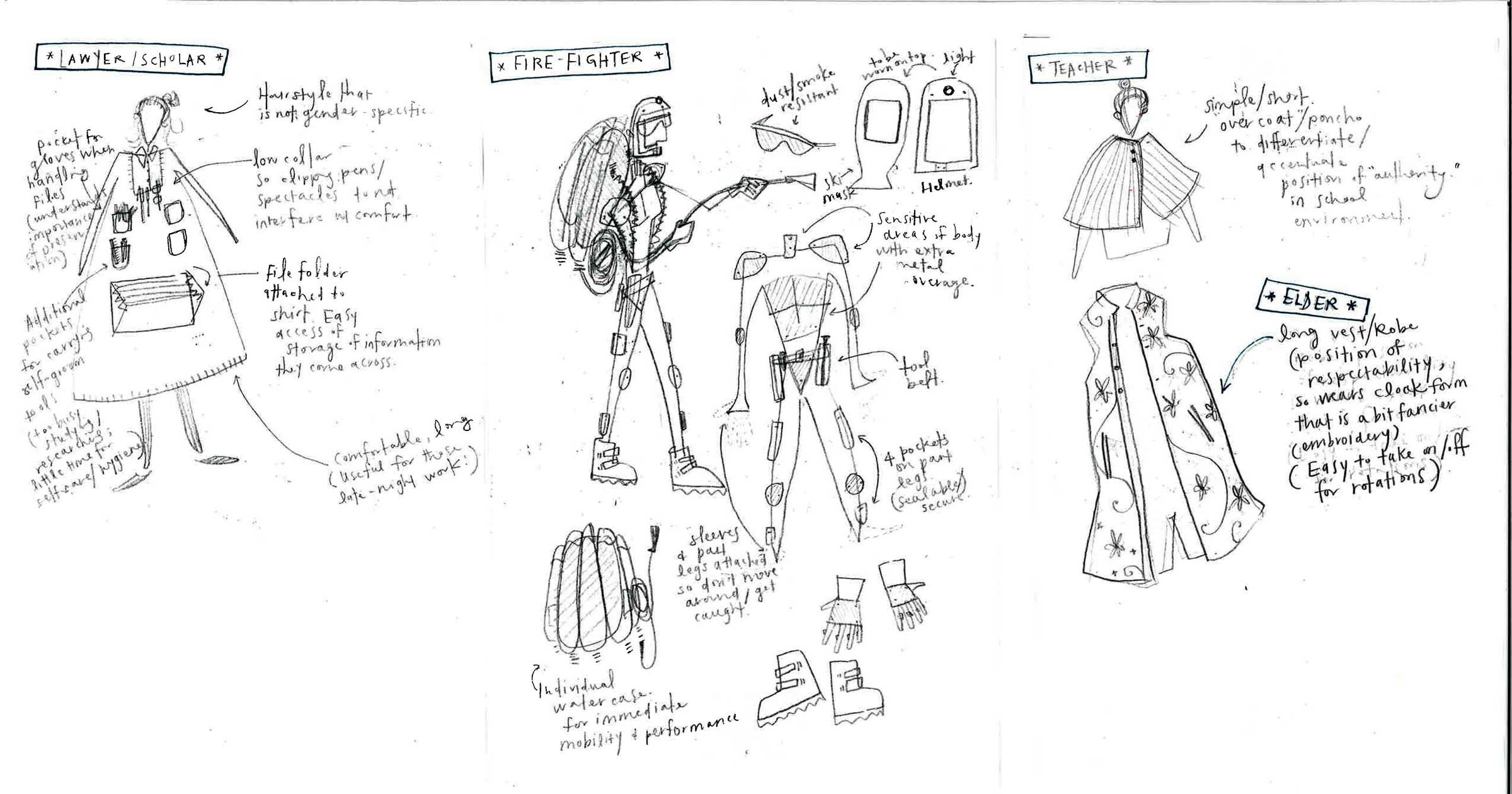
Spring 2019
Washington University in St. Louis
Radical Design: Making Civic Experiences
Mimi Shang
Worldbuilding
Speculative diagramming helps us to imagine how a world that prioritizes different values might look differently. In Radical Design workshops and courses, we begin with an alternative value, like “avoiding wastefulness and only producing what’s needed” at the center of the diagram above. Then, participants consider what implications that value might have on different aspects of society: healthcare, education, religion, family, or in the example above: “processing raw material, distributing food, growing/mining raw material, harvesting/gathering”. This provides the foundation for participants to ‘discover’ a tangible experience or moment in their world that exemplifies the tension in values, which they can explore further through enactment, storyboarding and designing artifacts.

Fall 2018, Radical Design, Washington University in St. Louis
Alex Ngo, Deepti Rao, and Sadie Gasc
While building out the speculative diagram, participants are encouraged to consider both positive and negative implications – what would be better, and what would be worse? This helps to avoid utopias and dystopias, and instead to find points of tension that often block us from imagining ‘unrealistic’ futures.
In workshops, we have used a quicker version of a speculative diagram that emphasizes this point. It asks, “In a world built on [the chosen value], what would be worse? What would be better?”
In workshops, we have used a quicker version of a speculative diagram that emphasizes this point. It asks, “In a world built on [the chosen value], what would be worse? What would be better?”


Spring 2019, Radical Design, Washington University in St. Louis
These speculative diagramming activities build on those taught by the Extrapolation Factory, drawing from methodologies of speculative design and futures studies.
We often use storyboarding to explore worlds mapped in speculative diagrams. In Spring 2019, we expanded this exercise to build from existing visions of worlds after Capitalism, and to use writing and drawing to develop the world along the way. Students each chose a work of speculative fiction to read or watch to inspire their worldbuilding. We also listened to N.K. Jemisin’s “master class in world building” on the Ezra Klein Show to explore knock-on effects and political/social imagination.
We often use storyboarding to explore worlds mapped in speculative diagrams. In Spring 2019, we expanded this exercise to build from existing visions of worlds after Capitalism, and to use writing and drawing to develop the world along the way. Students each chose a work of speculative fiction to read or watch to inspire their worldbuilding. We also listened to N.K. Jemisin’s “master class in world building” on the Ezra Klein Show to explore knock-on effects and political/social imagination.
 Spring 2019, Radical Design, Washington University in St. Louis
Spring 2019, Radical Design, Washington University in St. LouisMimi Shang and Efua Osei

...A lone domestic plot, roughly square-shaped with rounded corners, was rolling slowly alongside the resource pipeline towards him, throwing soft reflections off its glassy dome up through Jim’s window. A voice bubbled out of the comms system.
–“Hey, got any room for an extra plot?” It was a young woman’s voice, almost clear except for a tinge of frustration.
–“It depends–to whom do I have the pleasure of speaking?” Jim retorted.
–“Look, I know you need an extra set of hands, so unless you want me and my biocomp to roll on over to the next farm, let me park.”
Interacting with city-dwellers could be unpleasant at first, Jim knew that much–he had taken on a couple dozen similarly disgruntled urbanites at this very waypoint over the past of decade–but this one seemed to be a particularly fed-up individual. Still, she was right; the ever-finicky crop growth algorithms would go much quicker with an extra biocomputer, not to mention the extra set of hands. Sighing, he engaged the junction controls and watched as the hulls of the outer farmplots began to deform, creating a perfectly sized notch for the rapidly approaching domestic plot...
–
Spring 2019, Radical Design, Washington University in St. Louis
Sully Bacerdo and Wauson Liang

Fall 2018, Radical Design, Washington University in St. Louis
Annie Lee, Dominique Senteza, and Eliza Caperton